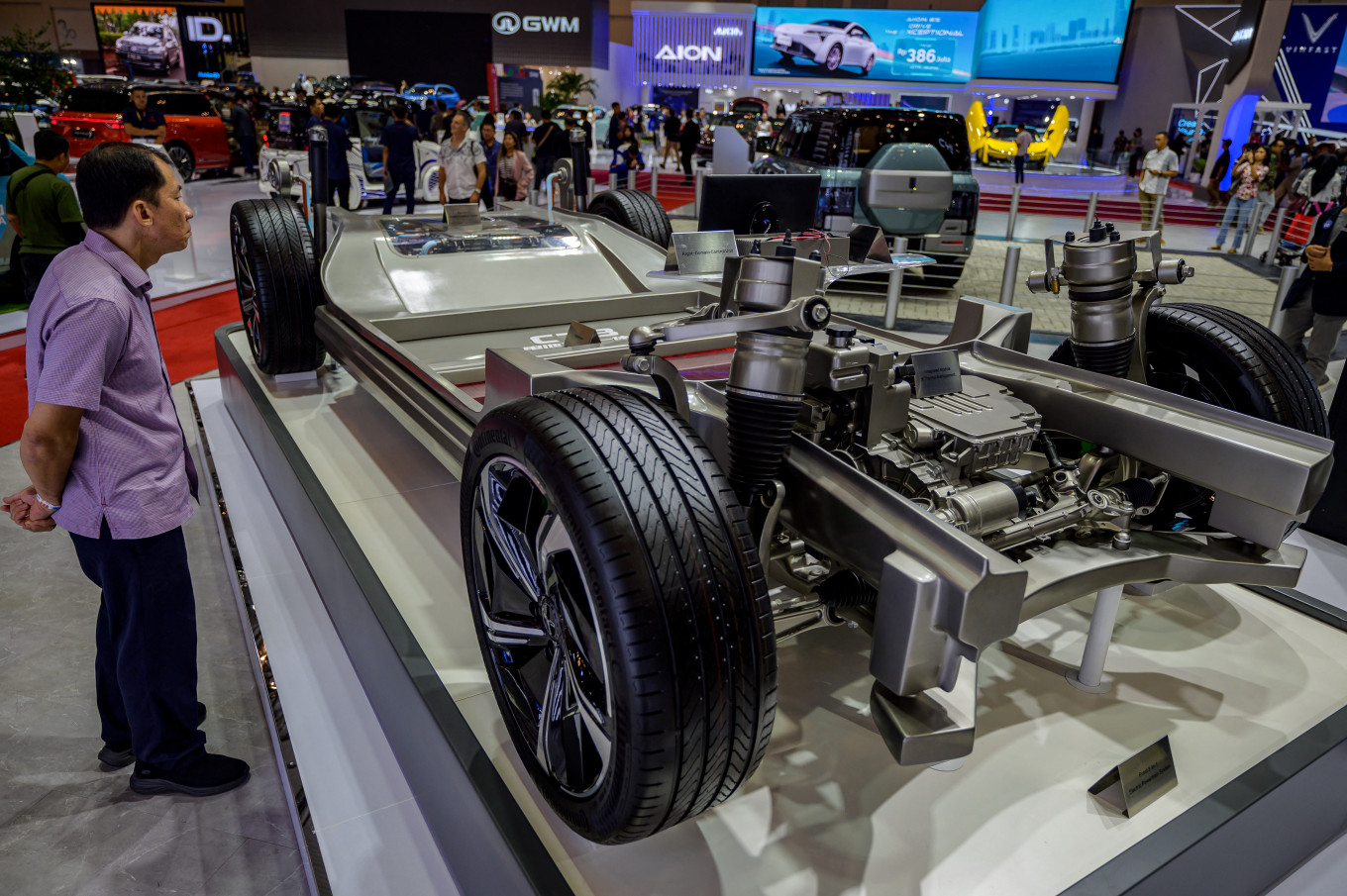Popular Reads
Top Results
Can't find what you're looking for?
View all search resultsPopular Reads
Top Results
Can't find what you're looking for?
View all search resultsPivotal economic challenges for the Prabowo administration
A decline in the manufacturing sector is not necessarily a bad thing, and industrial slowdown in Indonesia is a result of a complex process: a commodity boom that rendered manufacturing less competitive, stiffer global competition due to China’s rise in the world market, and Indonesia’s high logistics costs.
Change text size
Gift Premium Articles
to Anyone
 A visitor stands next to a module of an electric vehicle (EV) during the Gaikindo Indonesia International Auto Show 2024 in Tangerang, Banten, on July 18, showcasing the latest cars from 55 global automotive brands. Indonesia’s ambition to develop as an EV hub is strongly backed up by the country’s abundance in natural resources, particularly nickel, a critical resource for EV batteries. (AFP/Bay Ismoyo)
A visitor stands next to a module of an electric vehicle (EV) during the Gaikindo Indonesia International Auto Show 2024 in Tangerang, Banten, on July 18, showcasing the latest cars from 55 global automotive brands. Indonesia’s ambition to develop as an EV hub is strongly backed up by the country’s abundance in natural resources, particularly nickel, a critical resource for EV batteries. (AFP/Bay Ismoyo)
T
he manufacturing sector, combined with labor-intensive exports, played a major role in Indonesia’s economic development, especially in the two decades prior to the 1997-1998 Asian financial crisis. A growth rate of around 10 percent pulled up overall economic growth, but it has since been on a decreasing trend.
Today, the share of manufacturing value added (MVA) in gross domestic product has dropped to 18 percent, from almost 30 percent in early 2000s, and at less than 4 percent, its growth is below overall economic growth. As a comparison, Vietnam has been growing close to 7 percent on average for the past two decades, as its MVA constitutes around one-third of its gross domestic product (GDP).
A decline in the manufacturing sector is not necessarily a bad thing, and industrial slowdown in Indonesia is a result of a complex process: a commodity boom that rendered manufacturing less competitive, stiffer global competition due to China’s rise in the world market, and Indonesia’s high logistics costs.
However, misallocation of resources is also a problem. That is, while the service sector is picking up the slack, a closer look reveals that it is mostly low-end services and informal jobs, such as food service activities and retail trade.
Furthermore, within the manufacturing sector itself, production in capital-intensive subsectors like basic metal has increased significantly, but it has decreased markedly in labor-intensive subsectors such as textile and footwear. Industrial policies like hilirisasi (downstreaming) has contributed to this shift.
As a result, the ability of the manufacturing sector to create jobs has gone down significantly. In the 2014-2019 period, every 1 percent growth in the sector was associated with more than 150,000 jobs. In contrast, in 2019-2023, every 1 percent additional growth only added less than 15,000 jobs (Wihardja, 2024).
Indonesia needs faster economic growth to create jobs and reduce poverty. With its still-abundant labor force, it needs to move from low-productivity agriculture and informal services to higher-productivity manufacturing.


















